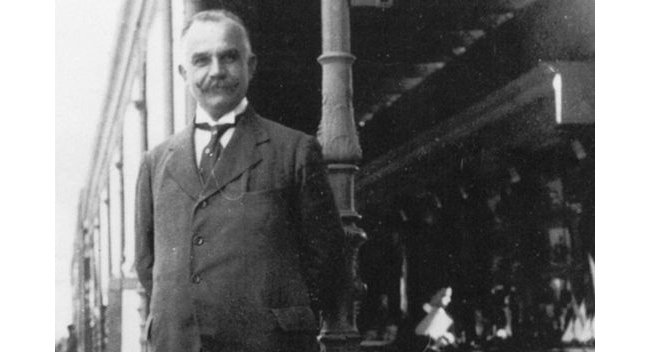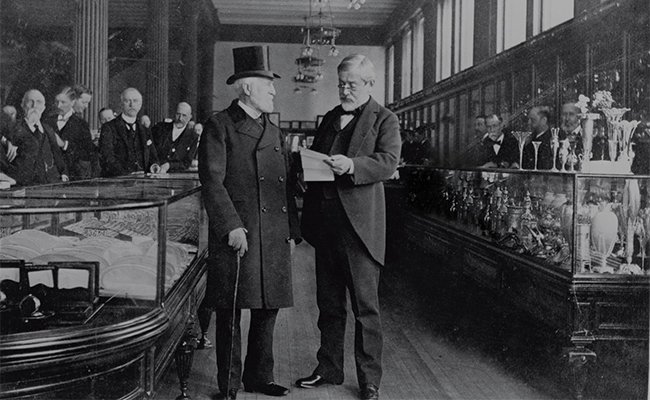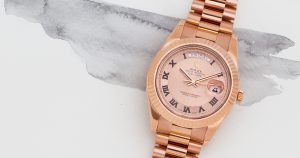How History’s Best Jewelers Got Their Start
To establish a brand with an incredible legacy, a person has to have an incredible journey first. Many of the greatest jewelers today started from humble beginnings, but with passion and skill built their internationally iconic brands.
Sotirios Boulgaris

The story of one of the oldest Italian jewelers actually begins in the small village of Paramythia, Greece in the Epirus region. Sotirios Boulgaris was the only surviving child of his family — all ten of his siblings had died. Giorgio Boulgaris taught his only living son the trade of silversmithing. Sotirios began by making belts, sheaths, earrings and other small items.
In 1873, while Epirus was under Ottoman rule, the Christians and Turks to burn down many villages, including Paramythia. During the fires, the Boulgaris store workshop and store was damaged. In 1877, the Boulgaris family made the decision to leave Greece. The father and son first stopped in Corfu, Greece where Sortirios would meet his future business partner Demetrios Kremos.
In 1880 they sailed to Naples where they would open their first store. Unfortunately, their first store was robbed and the pair moved to Rome where a shop owner generously gave their pieces space in his window display. As their business grew, their friendship grew apart and the two eventually went separate ways, opening their own shops. In 1905, Sotiros opened the flagship Bulgari store with his two sons on Via Condotti where the store remains today.
Charles Lewis Tiffany

More than a jeweler, Charles Tiffany was an entrepreneur. In 1837, with a loan of $1000, Tiffany opened his first store with John Young called Tiffany & Young. They mostly sold stationery and small gifts in New York City. Within a few years, another partner joined and the business expanded to include glassware, porcelain, clocks, cutlery and jewelry. In 1853, Tiffany bought the share from his partners and renamed the store Tiffany & Co.
Charles Tiffany was known for his ambitious searches for the finest and rarest gemstones and historic jewels, making him a favorite among the New York elite. One of Charles Tiffany’s most famous acquisitions was of the Tiffany Diamond, the largest yellow diamond at the time. Tiffany purchased the 287.42 yellow diamond in 1870 from the Kimberly mine of South Africa. Tiffany’s diamond cutter studied the stone for two years before finally cutting it to 128.54 carats. Other impressive gems include purchases of former French crown jewels.
Charles Tiffany’s influence on jewelry in the U.S. is unmistakable. Before Tiffany adopted the British sterling standard for silver jewelry, American jewelry was far less pure. Now, Tiffany is known for their remarkable sterling silver pieces. Finally, Charles Tiffany is responsible for the now-universal prong setting, often called the Tiffany setting. This six-prong setting is one of the most commonly used in engagement rings across the world.
Coco Chanel

Although Chanel does have a well-known fine jewelry collection, the fashion designer is most known for elaborate costume jewelry like multi-stranded faux pearls. Coco Chanel was a revolutionary fashion designer who changed many elements of women’s fashion, including the way we wear jewelry today. Chanel spent much of her childhood in an orphanage where she learned to sew. Later she would begin a relationship with Boy Capel, and English polo player who financed her first shops where she designed hats.
Coco Chanel believed that jewelry was meant to accessorize an outfit, not flaunt wealth. Though it seems common today, this idea was something new before Chanel. She also introduced the idea of mixing costume jewelry with fine jewelry — something typically never done. Piling on jewelry became a trend thanks to affordable and fashionable designs that Coco wore herself.
Chanel originally employed the House of Gripoix to create her pieces. Gripoix glass jewelry uses a special technique for glass enameling that results in bold and bright colored glass jewelry. However, by 1924, Chanel had opened her own jewelry workshop in Paris. Chanel undoubtedly changed the world’s opinion on costume jewelry, opening the door for countless jewelry designers wishing to design affordable and fashionable pieces.
Photo Credit: kadobijoux.com / tiffany.com / net-biographies.com







